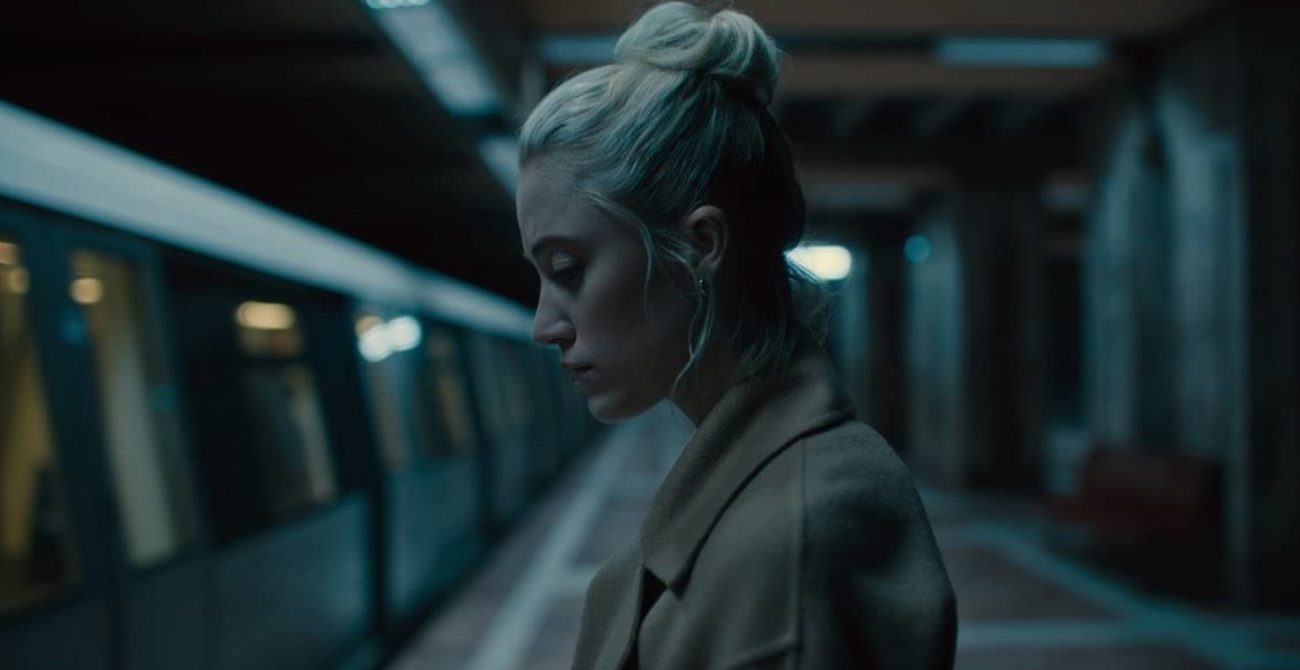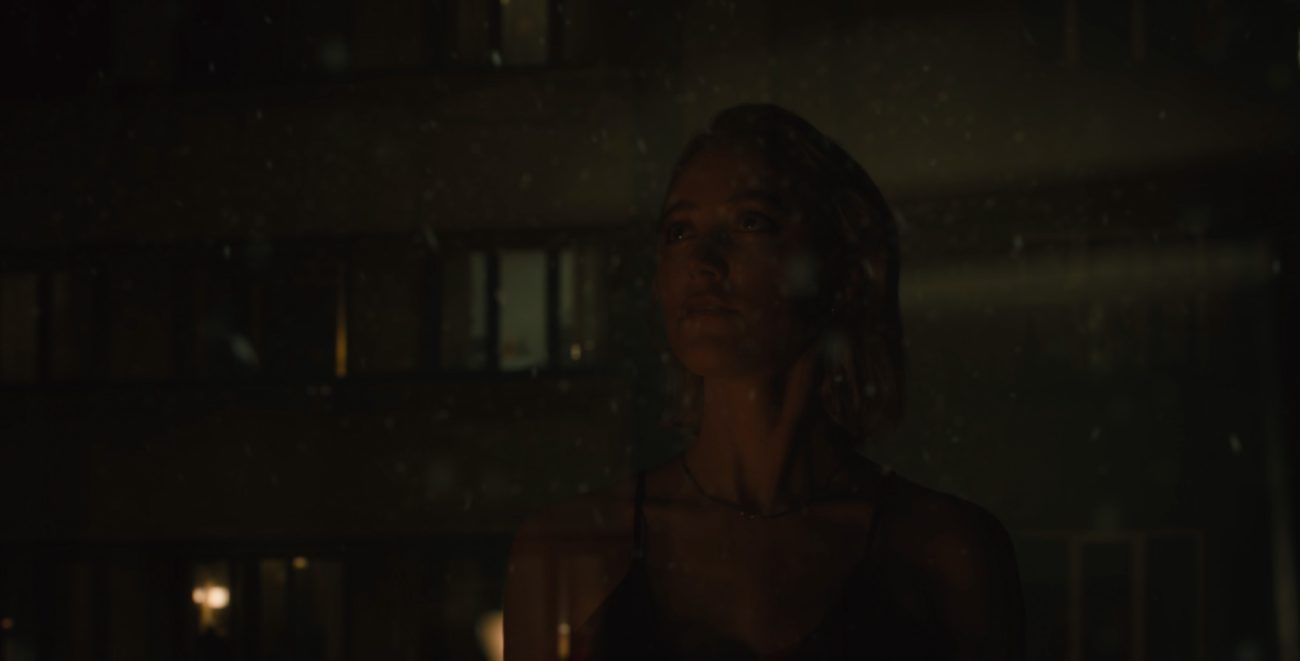Watcher opens with Julia (Maika Monroe) and her boyfriend, Francis (Karl Glusman), arriving in Bucharest, Romania. Francis was offered an opportunity to work at the office in Bucharest and his mother is Romanian, so the two decided to move to the city. While Francis is fluent in Romanian, Julia only knows a few words and phrases. She’s attempting to teach herself through audio lessons so she doesn’t have to rely so heavily on Francis when she wants to speak the language.
Shortly after they move into the new apartment, Julia notices a man is often standing in the window of the apartment across the street. She can only see him at night when he’s a silhouette, but she feels as if he’s looking at her. Julia also notices a man (Burn Gorman) following her when she goes to the movie theatre and the grocery store. Francis writes it off as paranoia on Julia’s part, but she’s adamant that this man has sinister intentions. It doesn’t help that Francis and Julia come across a crime scene one night. There are flashing lights, concerned neighbors, and people lingering in the shadows. Julie and Francis learn that a serial killer, dubbed the Spider, has been attacking and murdering young women in their homes. Julia is convinced that the Spider and the man who is following her are one and the same.

There is something inherently unnerving about living in an apartment complex. The close proximity of lives playing out mere feet away, separated only by a thin wall. Bits of information learned through overheard conversations, decorations on doors, and misdelivered mail. Of course there’s curiosity about what goes on in the apartment next door. That curiosity is only heightened by the distinct boredom of being alone in a brand new city.
The film makes the inspired choice not to include Romanian translation subtitles because Julia, the audience’s entry point to the story, also doesn’t speak the language. She relies on Francis to translate and help her navigate their life in the new country. It’s an isolating experience for her. Julia can’t understand the news reports of the murders, and often finds herself in situations where she only understands bits of the conversation. The more she learns, the more she begins to wonder if Francis is purposefully misleading her with the words he chooses as he translates.
The colors in Watcher are stunning. Julia’s bright clothes contrast with the dark cityscape around her. There’s a richness in the saturation that accentuates the uneasy feeling that permeates every aspect of her day-to-day life. As her paranoia sets in, the colors in Julia’s world are drained. She covers the windows with drab curtains. She is surrounded by beiges and browns, a stark contrast to the brightness she first arrived on the screen with.

There’s enough going on elsewhere in the film that it’s not bogged down by Julia’s obsession with the man in the window. Watcher is obviously a feminist twist on the Rear Window style of obsession. Francis tries to explain away Julia’s fears by saying that it’s not outside the realm of possibility for this mysterious man to just be a neighbor who is frequenting the same places Julia is. Time and again, the people in Julia’s life explain away her fears. She’s overreacting, it’s not what she says, it’s harmless. These responses are nothing new for most women when they express genuine fears. Francis frames his concern as him being rational, when he is really distrusting Julia’s lived experiences.
There’s nothing otherworldly haunting Julia in Watcher, and the film’s terror doesn’t come from jump scares. Instead the anxiety is founded in reality. She’s losing trust in her loved one, she’s attacked in her own home, and she is being stalked. Monroe’s performance is exceptionally grounded. After stealing scenes in movies like Greta and It Follows, Watcher is a delicious use of her talents as a scream queen. Monroe goes beyond the usual doe-eyed female horror lead to something far more nuanced. Watcher’s success relies almost entirely on Monroe, and it is a burden she is more than capable of carrying.
While Watcher is a fairly paint-by-numbers take on this story and its general themes, the film is certainly one of the best iterations out there. Director Chloe Okuno’s vision is clear and striking, while the supporting cast adds to the simmering, slow-burn tension. Watcher is more subdued than modern horror fare and will not provide screams of terror caused by boogeymen lurching around corners. Instead, it creates a sense of dread that burrows into the audience. Rather than creating a new monster, Watcher preys on a terror women are already very familiar with.



